Related Research Articles

The masque was a form of festive courtly entertainment that flourished in 16th- and early 17th-century Europe, though it was developed earlier in Italy, in forms including the intermedio. A masque involved music, dancing, singing and acting, within an elaborate stage design, in which the architectural framing and costumes might be designed by a renowned architect, to present a deferential allegory flattering to the patron. Professional actors and musicians were hired for the speaking and singing parts. Masquers who did not speak or sing were often courtiers: the English queen Anne of Denmark frequently danced with her ladies in masques between 1603 and 1611, and Henry VIII and Charles I of England performed in the masques at their courts. In the tradition of masque, Louis XIV of France danced in ballets at Versailles with music by Jean-Baptiste Lully.

County Carlow is a county located in the Southern Region of Ireland, within the province of Leinster. Carlow is the second smallest and the third least populous of Ireland's 32 traditional counties. Carlow County Council is the governing local authority.
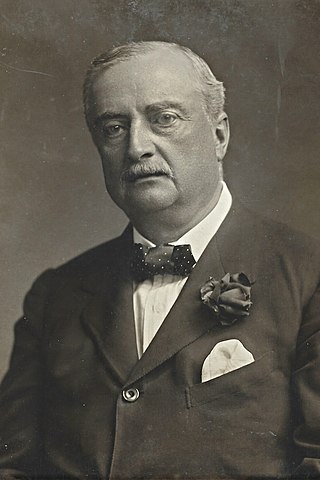
John Edward Redmond was an Irish nationalist politician, barrister, and MP in the House of Commons of the United Kingdom. He was best known as leader of the moderate Irish Parliamentary Party (IPP) from 1900 until his death in 1918. He was also the leader of the paramilitary organisation the Irish National Volunteers (INV).

County Wexford is a county in Ireland. It is in the province of Leinster and is part of the Southern Region. Named after the town of Wexford, it was based on the historic Gaelic territory of Hy Kinsella, whose capital was Ferns. Wexford County Council is the local authority for the county. The population of the county was 163,527 at the 2022 census.
The vast majority of placenames in Ireland are anglicisations of Irish language names; that is, adaptations of the Irish names to English phonology and spelling. However, some names come directly from the English language, and a handful come from Old Norse and Scots. The study of placenames in Ireland unveils features of the country's history and geography and the development of the Irish language. The name of Ireland itself comes from the Irish name Éire, added to the Germanic word land. In mythology, Éire was an Irish goddess of the land and of sovereignty.
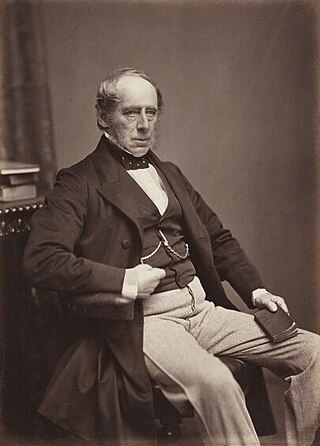
John Somerset Pakington, 1st Baron Hampton,, known as Sir John Pakington, Bt, from 1846 to 1874, was a British Conservative politician.

Nicholas Christopher Michael Ring was an Irish hurler whose league and championship career at senior level with the Cork county team spanned twenty-four years from 1939 to 1963. He established many championship records, including career appearances (65), scoring tally (33–208) and number of All-Ireland medals won (8); however, these records were subsequently bested by a number of players. Ring is widely regarded as one of the greatest hurlers in the history of the game, with many former players, commentators and fans rating him as the number one player of all time.
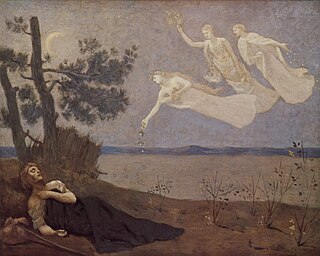
The aisling, or vision poem, is a mythopoeic poetic genre that developed during the late 17th and 18th centuries in Irish language poetry. The word may have a number of variations in pronunciation, but the is of the first syllable is always realised as a ("sh") sound.

Enniscorthy is the second-largest town in County Wexford, Ireland. The town is located on the picturesque River Slaney and in close proximity to the Blackstairs Mountains and Ireland's longest beach, Curracloe.

The Irish Rebellion of 1798 was a popular insurrection against the British Crown in what was then the separate, but subordinate, Kingdom of Ireland. The main organising force was the Society of United Irishmen. First formed in Belfast by Presbyterians opposed to the landed Anglican establishment, the Society, despairing of reform, sought to secure a republic through a revolutionary union with the country's Catholic majority. The grievances of a rack-rented tenantry drove recruitment.
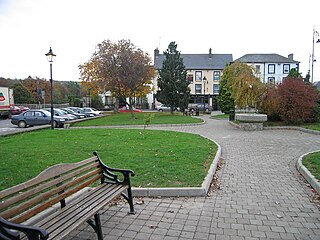
Bunclody, formerly Newtownbarry, is a small town on the River Slaney in Wexford, Ireland. It is located near the foot of Mount Leinster. Most of the town is in County Wexford; a small area at the north end of town is in County Carlow. Bunclody has received a number of high scores in the Tidy Towns competition. The town is known for the "Streams of Bunclody Festival" held during the month of July.
John Kelly lived in the town of Killanne in the parish of Rathnure, west of Enniscorthy, in County Wexford in Ireland, and was a United Irish leader who fought in the Irish Rebellion of 1798. Kelly was obviously well known to rebels and loyalists alike during the short duration of the Wexford Rebellion but very little is known of him outside this time. He was one of the leaders of the rebel victory at the Battle of Three Rocks which led to the capture of Wexford town but was later seriously wounded while leading a rebel column at the Battle of New Ross.
Molly Keane, née Mary Nesta Skrine, and who also wrote as M. J. Farrell, was an Irish novelist and playwright.
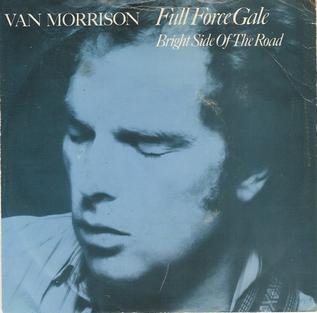
"Full Force Gale" is a song written by Northern Irish singer-songwriter Van Morrison. It was included on his 1979 album Into the Music.

"The Cuckoo" is a traditional English folk song, also sung in the United States, Canada, Scotland and Ireland. The song is known by many names, including "The Coo-Coo", "The Coo-Coo Bird", "The Cuckoo Bird", "The Cuckoo Is a Pretty Bird", "The Evening Meeting", "The Unconstant Lover", "Bunclody" and "Going to Georgia". In the United States, the song is sometimes syncretized with the other traditional folk song "Jack of Diamonds". Lyrics usually include the line : "The cuckoo is a pretty bird, she sings as she flies; she brings us glad tidings, and she tells us no lies."
The High Sheriff of Carlow was the British Crown's judicial representative in County Carlow, Ireland from the 14th century until 1922, when the office was abolished in the new Free State and replaced by the office of Carlow County Sheriff. The sheriff had judicial, electoral, ceremonial and administrative functions and executed High Court Writs. In 1908, an Order in Council made the Lord-Lieutenant the Sovereign's prime representative in a county and reduced the High Sheriff's precedence. However, the sheriff retained his responsibilities for the preservation of law and order in the county. The usual procedure for appointing the sheriff from 1660 onwards was that three persons were nominated at the beginning of each year from the county and the Lord Lieutenant then appointed his choice as High Sheriff for the remainder of the year. Often the other nominees were appointed as under-sheriffs. Sometimes a sheriff did not fulfil his entire term through death or other event and another sheriff was then appointed for the remainder of the year. The dates given hereunder are the dates of appointment. All addresses are in County Carlow unless stated otherwise.
Stephen McGregor, known professionally as Di Genius, is a Jamaican record producer, singer, and songwriter. Di Genius comes from a musical family—his father is legendary veteran reggae artist Freddie McGregor and his siblings, Daniel "Chino" McGregor and Yeshemabeth "Shema" McGregor, are also singers. While Di Genius was primarily known for producing riddims out of his "Big Ship" recording studio, he has gone on to produce and write songs for international artists such as Sean Paul, Drake, Nelly Furtado, Lianne La Havas, Shakira, John Legend among others. The New York Times named him a "Reggae Veteran At The Age of 18."
When the king enjoys his own again is a Cavalier ballad written by Martin Parker during the English Civil War. It was later adopted by Jacobites. According to the historian Dr. Bernard Capp, this song was perhaps the most popular song in mid-seventeenth century England. The eighteenth century critic Joseph Ritson called it "the most famous and popular air ever heard in this country".
Jane Emily Herbert was an Irish poet who, in her time, was hailed as the legitimate successor, in the female line, to the laurel vacant since the death of Felicia Hemans in 1835.
References
- ↑ The Dublin University Magazine. William Curry, Jun., and Company. 1863.
- ↑ FUSIO. "CLOHAMON, Clohamon, WEXFORD". Buildings of Ireland. Retrieved 28 December 2023.
- ↑ Lewis, Samuel (1837). A Topographical Dictionary of Ireland, Comprising the Several Counties, Cities,...with Historical and Statistical Descriptions: Embellished with Engravings of the Arms of the Cities,...and of the Seals,... S. Lewis and Company. pp. xli.
- ↑ de Vál, Séamas S. (2009). "The Visit of Reverend Thomas Goff to Bunclody, 1806". The Past: The Organ of the Uí Cinsealaigh Historical Society (30): 23–26. ISSN 2009-2040. JSTOR 44554529.
- ↑ Lacy, Thomas (1863). Sights and Scenes in Our Fatherland. Simpkin, Marshall & Company. p. 485.
- ↑ "Community rejuvenation for Clohamon". WexfordLocal.com. 13 August 2021. Retrieved 28 December 2023.
- 1 2 Kennedy, Patrick (1869). Evenings in the Duffrey. M'Glashan and Gill. pp. 59–60.
 This article incorporates text from this source, which is in the public domain .
This article incorporates text from this source, which is in the public domain . - ↑ Curry, William (1863). "Indigenous-Ballad Poetry of Ireland". The Dublin University Magazine. 61: 458–459.